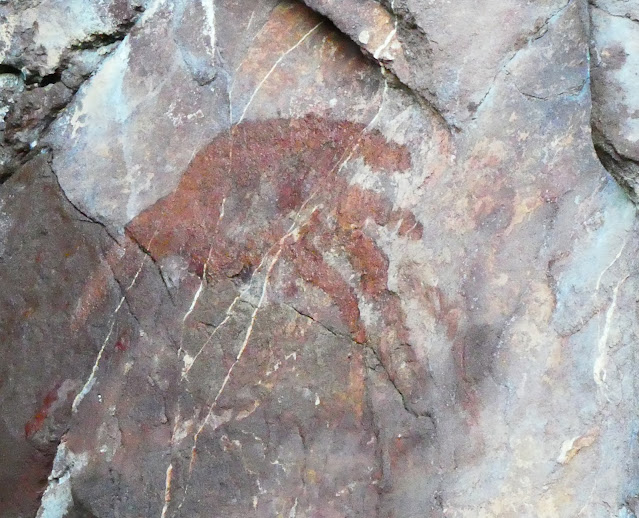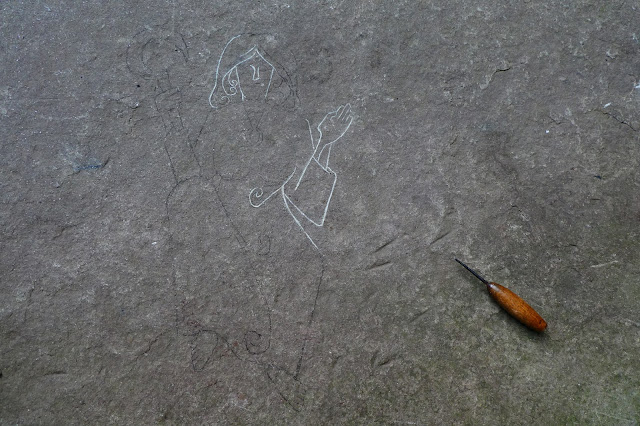Space and Placement
Today's tutorial went well, focusing mainly on space - both physical and visual, in the 'museum'/exhibition layout, and in the text itself, which is now in the final editing and presentation stage.
We discussed the nature of traditional museums and how they tend to put the visitor through a planned timeline of experience - navigating different places and spaces - circular and/or linear. This came back to my sketchy idea of enforcing some kind of cyclical physicality upon the visitor to my space - bringing them back to the beginning (cf. the ouroborus snake design, again). Seeing strong examples of what can be done with art books and layout had influenced my thoughts on using more white space in the book/text (and reflecting this in the physical museum layout) - by adding blank pages, or creating extra spaces between lines and words at crucial points in the narrative, and interpolating the drawings of characters not as illustrations but as 'break points', for example: in the climactic battle (the crucial point of most 'heroic poetry' - battles and heroic deaths - cf. the huge number of poetic and compound words in Old English pertaining to the glorification of warfare), interpolating a double blank page in the middle of the action, possibly with the figurative drawing of not the heroine or any warrior-types, but the passive, priestly character who's not even involved in the battle scene (see below). Therefore creating a breathing space, as well as reinforcing the literal and abstract dualities which inform the work, i.e war/peace, thuoght/action, dark/light, etc. as well as the Sartrian idea that heroes are made, not born. As the text is so dense, creating these visual hooks will possibly help to elucidate some of the themes to a visitor who flicks through it. A few other 'design pages' (I hesitate to describe them as illustrations) are also presented below. Thinking back to Semster 1 and the 'visual poetry' (and other modernist poetry) we looked at, I'm also wondering what I can do with the text now. And as a lot of this thinking is now taking me back to my undergrad final work, which channelled Taoist and other eastern concepts of white space not as a negative or 'absence of', but as an integral part of the design element.
 |
| Ulfish axe-men form an orderly pyramid - from being everyone's favourite bogeymen, they ultimately vindicate themselves by helping to liberate their ancestral foes, the Ylfu. |
 |
| The dragon/ouroborus is now on the first page - as well as the last, Alpha and Omega. |
 |
| Gifli, the hermaphrodite Elken priest of Hretha, instills a pause in proceedings just as the climactic battle kicks off. |



Comments
Post a Comment